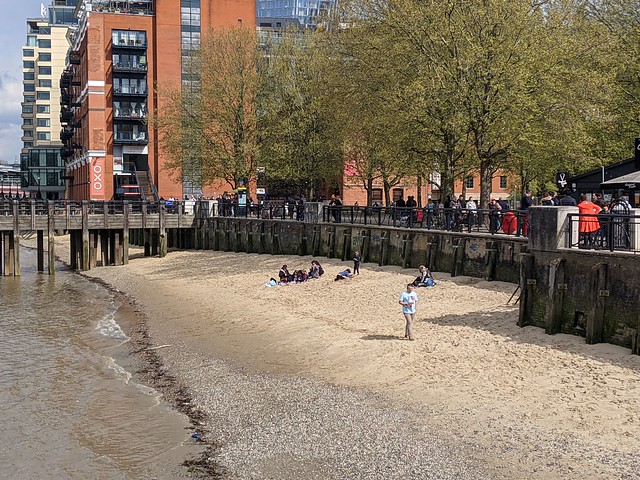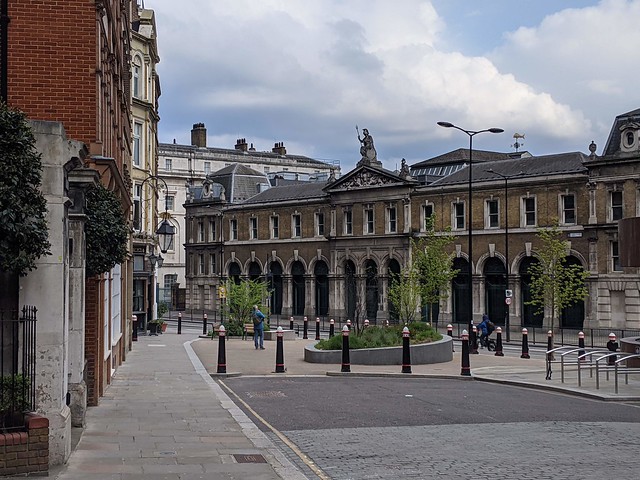Demolition of 41-43 Mincing Lane. 40-54 Fenchurch Street, former church hall and the Clothworkers Hall and the redevelopment to provide a new building comprising four levels of basement (including a basement mezzanine level), ground, mezzanine, plus part 9, 31 and 35 storeys plus plant containing offices (81) and flexible shop/financial and professional services/cate and restaurant uses (A1/A2/A3) at ground floor level and flexible shop/cale and restaurant/drinking establishment uses (A1/A3/A4) ot levels 10 and 11. winter garden (Sui Generis): Reprovision of the Clothworkers on (Sui Generis) within part ground, part level): ) Creation of ground level public access to level 10 roof garden and basement level 1 to Grade ! Listed crypt ) Dismantling, relocation and reconstruction of the tombe's Chapel Crypt to basement level 1 and associated exhibition accommodation (Sui Generis) (listed Grade 1): v) Alterations to and conservation of the Grade 1 Listed Tower of All Hallows Staining: vi) Provision of new hard and soft landscaping and other associated works.
In order to enable the development it is proposed to stop up part of Dunster Court, part of Fenchurch Street, part of Mark Lane, part of Mincing lane and the whole of Star Alley. Big changes afoot here.Sunday, 2 May 2021
May Day London
Q: Is it safe to come out yet?
A: I reckon so.
First time in the "Great Wen” this year due to you-know-what. Avoided travelling at the busiest times and got a coach to myself. Even so I was very glad to step outside Waterloo Station and de-mask. If you’d taken any notice of the media you’d believe that the streets are teeming with a mass of irresponsible “covidiots” but on the evidence of a Bank Holiday weekend Saturday afternoon walk I’d say that’s bollocks. Like much else in the papers and on TV. Here’s a few highlights.
South Bank.
Ok so hardly empty but for a Saturday afternoon hardly crowded either and easy enough to make you way along without bumping into anyone. As the sun was out some people just had to go to the beach :-)
I don’t think I’ve ever seen Clink Street this quiet either. Of course the museum is still shut and most of the overseas tourists are still overseas.
The City
The City of London is usually quieter at weekends but I don’t think I’ve ever managed to take a photo of Lower Thames Street without a motor vehicle in sight.
St Dunstan-in-the-East Built 1100, extended 1391, repaired 1631, damaged 1666, patched up 1668-1671, steeple added 1695-1701, rebuilt 1817, bombed out 1941, opened as a public garden 1971. A City of London history in one building.
A few picnickers, a few photographers. No shortage of places to sit down if you could find a bench that wasn’t covered in bird shit of course. In St. Mary at Hill I’d watched a grey squirrel brazenly running up the middle of the street.
In Seething Lane, which wasn’t seething with people, the tower of St. Olave Hart Street was overshadowed by the surreal green reflection off the modern tower beyond.
St. Olave’s is one of few medieval churches to survive the Great Fire of 1666, was rebuilt after being bombed in the blitz, and was described by Sir John Betjemen as "a country church in the world of Seething Lane”. Already overwhelmed by its surroundings it’s about to become even more so, planning proposal 19/01307/FULEIA having been approved for
In Lombard Street, hardly a soul about.
Walbrook similar, although a private security guard strolled about giving suspicious looks at the photographer.
In Great Trinity Lane the churchwardens of St. James Garlick Hythe want you to be absolutely clear how far their bounds extend, though the building to which these markers are now attached wasn’t there in 1889 I think. According to this map “HT” would be Holy Trinity the Less.
The College of Arms - the official heraldic authority for England, Wales, Northern Ireland and much of the Commonwealth, nothing to do with weapons - built in the late 17th century, sliced off in 1866 when Queen Victoria Street was built (from where this photo is taken), and narrowly escaping destruction during the Blitz in 1941saved only by a change in the direction of the wind. It’s about to get washed by a short, heavy rain shower. As did I.
Faraday Buildings, Queen Victoria Street. The GPO’s first telephone exchange in London, opened in March 1902. It obscures views of parts of St.Pauls Cathedral and led to the building regulations that protect views of St. Pauls from certain vantage points.
North Bank
Moody clouds over the Thames near Blackfriars Bridge. In spite of appearances the rain mostly held off, for which I was glad since “indoors” was still mostly out-of-bounds for virus reasons.
A “Waterloo Bridge moment”, looking downstream towards the city, the area I’d just walked through, before heading for sustenance at the Southbank Centre Food Market behind the Royal Festival Hall which had reopened the day before. Although Google thinks it’s still temporarily closed at the time of writing. Vegetable Biriani from The Indians Next-door and very nice it was too.
All the above photos and more are in this Flickr album:
And I’m looking forward to getting out more as restrictions are lifted.
Subscribe to:
Post Comments (Atom)














No comments:
Post a Comment